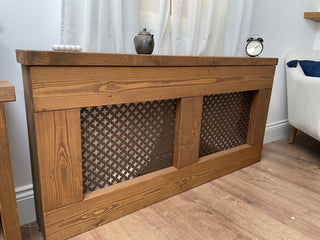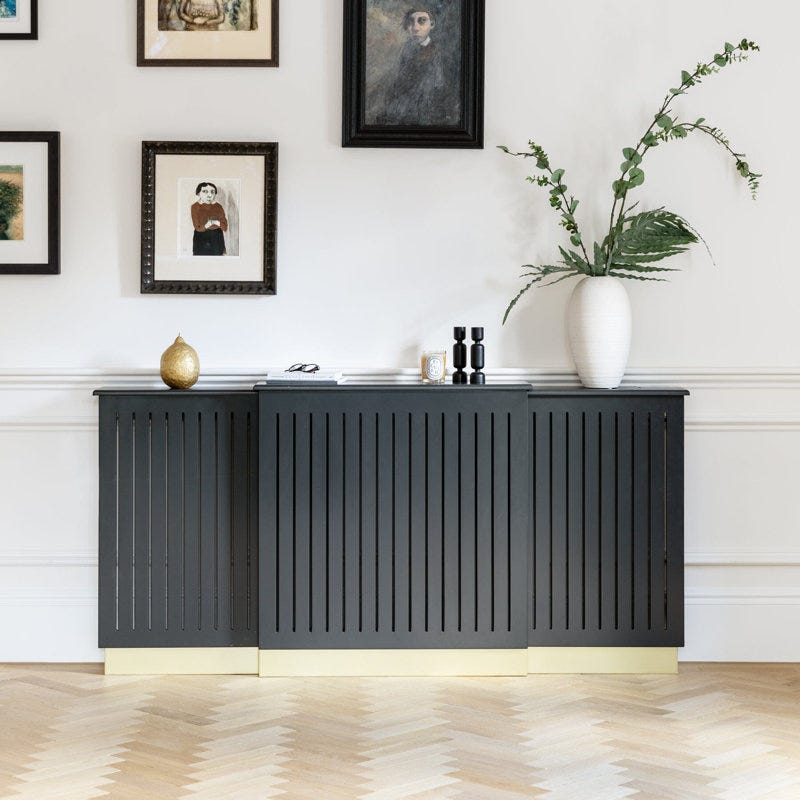How a Radiator Cover Can Boost Energy Effectiveness in Your Home
How a Radiator Cover Can Boost Energy Effectiveness in Your Home
Blog Article
Radiator Covers: Comprehending Materials, Designs, and Benefits
Radiator covers serve both visual and functional objectives within a home, providing a variety of materials such as mdf, steel, and wood to fit different design choices. As designs evolveâEUR" from typical to contemporaryâEUR" these covers not only improve the visual appeal of a room however also add to safety and security and energy performance. Selecting the best radiator cover involves recognizing the nuances of products, layouts, and their connected benefits. This expedition increases essential inquiries concerning exactly how these elements incorporate into your living atmosphere and what considerations need to guide your choice procedure.
Kinds Of Products


Wood covers, commonly crafted from woods such as oak or maple, supply a timeless, cozy look that complements conventional insides. Their resilience and capability to be discolored or repainted add to their convenience. Steel covers, usually made from steel or aluminum, are preferred for their robustness and contemporary look, typically including sleek lines that boost modern areas.
MDF, a made wood product, is preferred for its cost-effectiveness and ease of personalization. It can be painted or finished to match existing decor while offering a smooth surface area. Plastic covers, while less common, are light-weight and immune to dampness, making them suitable for damp settings.
Ultimately, the choice of material for a radiator cover ought to line up with the home owner's design choices, useful needs, and the specific setting where the cover will certainly be installed. Each material provides a distinctive personality, making certain that there is an alternative to match every preference and setup.
Popular Style Styles
Stressing visual allure, preferred style styles for radiator covers show a series of preferences and indoor layout patterns. Traditional designs frequently feature intricate woodwork and ornate describing, making them ideal for vintage-inspired or classic insides. These covers typically incorporate sculpted aspects, offering a warm and welcoming feel to any room.
In comparison, contemporary layouts concentrate on minimalist looks, identified by tidy lines and downplayed sophistication. Materials such as metal or streamlined timber with a smooth coating are frequently utilized, allowing these covers to blend perfectly right into modern-day areas. Industrial styles, on the various other hand, embrace basic materials like subjected metal and concrete, including a strong declaration to loft space or urban setups.
For those looking for a special touch, bespoke designs use modification choices that satisfy private choices, enabling house owners to select shades, patterns, and products that enhance their decoration. Furthermore, farmhouse-style covers incorporate rustic elements, including troubled wood and straightforward types that stimulate a comfortable, nation beauty.
Benefits of Radiator Covers
Radiator covers not only enhance the visual appeal of a space however additionally provide a number of functional benefits that make them a rewarding enhancement to any kind of home. One of the main advantages is security, particularly in households with children or pet dogs. Covers decrease the danger of burns from hot radiator surfaces, making sure a safer setting.
Additionally, radiator covers can enhance energy performance. By guiding warm right into the room as opposed to enabling it to leave, they assist maintain a constant temperature level, reducing home heating costs gradually. This is particularly advantageous in older homes where radiator systems may be less effective.
Another notable benefit is sound decrease. Radiators can often produce unwanted noises throughout operation, and covers can assist smother these sounds, adding to an extra calm home. Radiator covers can be practical, offering added storage space or screen space, link therefore maximizing the utility of often-overlooked areas.
Last but not least, they can shield radiators from dirt and debris, which can prevent effectiveness and boost upkeep demands. With these integrated benefits, radiator covers emerge as a sensible solution for boosting both the functionality and style of any home environment.
Setup Considerations
Installing radiator covers needs careful factor to consider to make certain both performance and safety and security (Radiator cover). First, assess the measurements of your radiator and the surrounding room to ensure an appropriate fit. Precise dimensions are essential; an ill-fitting cover can block warm flow or produce security hazards
Next, examine the product of the cover. While timber uses aesthetic charm, steel choices may offer better durability and warm resistance. Think about the weight of the cover too; larger covers may need added assistance or reinforcements to stay clear of sagging or damages gradually.
Air flow is one more important element. Covers have to feature adequate airflow to avoid getting too hot and maintain efficient heating. Look for designs with additional resources slats or openings that permit warm to circulate without obstruction.
Furthermore, ensure that the cover is firmly placed to avoid accidents, especially in homes with pets or kids. Radiator cover. It's advisable to adhere to the supplier's setup guidelines carefully and, if essential, get in touch with an expert for complex setups
Upkeep and Care Tips
Proper upkeep of radiator covers is crucial for read this article guaranteeing their durability and ideal performance. For repainted or timber covers, think about a suitable gloss or safety finish to preserve their appearance.
Evaluate the covers regularly for signs of wear or damages, such as fractures or peeling paint. Resolving these problems quickly can protect against additional degeneration. Guarantee that the covers are securely secured and look for any kind of loose screws or installations, as vibrations from the radiator can loosen them with time.
In chillier months, stay clear of putting hefty objects or attractive items on top of the radiator covers, as this can restrain heat circulation and cause unneeded stress to the structure. Consider seasonal maintenance by getting rid of the covers for extensive cleansing and inspection during warmer months when the home heating system is non-active. Adopting these basic treatment suggestions will enhance the performance and visual appeal of your radiator covers, ensuring they serve their objective effectively for many years to find.

Conclusion
In summary, radiator covers offer as useful and aesthetic improvements to residential areas. Mindful factor to consider of installation and maintenance more ensures the durability and efficiency of radiator covers in any kind of home environment.
Radiator covers serve both visual and functional functions within a home, offering a variety of materials such as hardwood, metal, and MDF to match various style choices. Selecting the appropriate radiator cover entails comprehending the subtleties of products, layouts, and their linked advantages.Emphasizing aesthetic appeal, popular design styles for radiator covers reflect a variety of tastes and interior design trends.Radiator covers not only enhance the aesthetic appeal of a room but likewise provide a number of functional benefits that make them a beneficial addition to any type of home. Take into consideration the weight of the cover as well; larger covers might call for extra assistance or supports to prevent sagging or damage over time.
Report this page